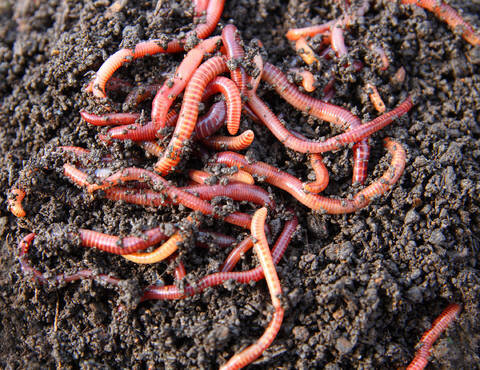Everything You Need to Know Concerning Red Wigglers for Composting
Red wigglers, or Eisenia fetida, play an essential function in the realm of composting, changing natural waste into beneficial dirt amendments. The procedure of establishing up a worm bin and maintaining it can posture difficulties.
What Are Red Wigglers?

(Lake Hickory Bait)
Native to North America, red wigglers are surface-dwelling microorganisms that favor moist, warm environments rich in disintegrating raw material. Their diet regimen is composed mainly of rotting plant product, food scraps, and other organic particles, which they take in and break down efficiently. As they digest this product, they produce nutrient-rich castings that enhance dirt fertility.
Red wigglers are hermaphroditic, having both male and women reproductive body organs, and can replicate swiftly under ideal problems. Overall, red wigglers are important contributors to the process of reusing natural waste into beneficial garden compost.
Benefits of Using Red Wigglers
Using red wigglers in composting systems offers various benefits that improve both the efficiency of waste monitoring and the high quality of the resulting compost. These worms, medically understood as Eisenia fetida, are particularly reliable at breaking down organic matter, turning kitchen area scraps and lawn waste right into nutrient-rich compost at a sped up rate.
Among the primary benefits of using red wigglers is their ability to consume large quantities of organic product, commonly processing their weight in food waste daily. This high intake rate causes faster decomposition and minimizes the volume of waste sent out to landfills. The spreadings generated by red wigglers are abundant in necessary nutrients, beneficial microorganisms, and enzymes, making them an outstanding plant food for yards and plants.
Furthermore, red wigglers flourish in a variety of settings, making them versatile for both interior and outside composting systems - red wigglers. Their existence in a compost container aids to freshen the material, preventing smells and promoting a healthy composting procedure. Generally, utilizing red wigglers not only adds to efficient waste management but additionally sustains sustainable gardening techniques with the production of high-quality garden compost
(Granite Falls Worm Farms)
Setting Up Your Worm Bin
To effectively establish a worm container, it is necessary to choose a proper container that fulfills the demands of red wigglers while providing a conducive environment for composting. An appropriate bin can be made from plastic, timber, or steel, with a capacity of at the very least 1 square foot for every single extra pound of worms.
Make certain the container has adequate drainage holes to avoid excess wetness, as red wigglers prosper in a damp, but not water logged, setting. red wigglers. The container should additionally be aerated to offer enough airflow, protecting against anaerobic problems that can damage the worms
A perfect place for the worm container is a great, dark location, free from straight sunshine and extreme temperatures, as red wigglers like a temperature array of 55 to 77 degrees Fahrenheit.
Before presenting the worms, prepare bedding products such as shredded paper, cardboard, or coconut coir, which will certainly offer both habitat and food. Dampen the bed linens gently to develop an inviting atmosphere for the worms. Lastly, consider positioning a cover on the bin to preserve humidity and reduce parasites, while ensuring it can be quickly eliminated for upkeep.
Feeding and Care Guidelines
Feeding red wigglers is a vital aspect of preserving a healthy composting system. These worms grow on a diverse diet, mostly composed of organic materials such as fruit and veggie scraps, coffee grounds, and smashed eggshells. It is important to prevent feeding them meat, milk, and oily foods, as these can create unpleasant odors and attract insects.
When presenting food to your worm bin, cut or shred materials right into smaller items to help with quicker decomposition. Begin with percentages to determine the worms' usage price, gradually raising the quantity as they adjust. It is advisable to alternate feeding locations within the container to urge comprehensive mixing and Look At This oygenation of the garden compost.

Troubleshooting Common Issues
Maintaining a prospering worm composting system can sometimes provide difficulties that need attention and troubleshooting. Common problems include an unpleasant smell, which usually shows overfeeding or the visibility of anaerobic problems. To treat this, lower the amount of food included and make sure appropriate aeration by mixing the bedding product.
An additional regular problem is the retreat of worms from the bin. This can occur as a result of extreme moisture or improper environmental conditions. Regularly examine the wetness degrees, going for a damp yet not soggy uniformity, and keep optimum temperatures between 60-80 ° F(15-27 ° C )to produce a comfortable environment for your red wigglers.
Pests, such as fruit flies, can additionally invade worm containers. red wigglers. To combat this, cover food scraps with a layer of bed linens or shredded paper to deter flies from laying eggs. In addition, guarantee that any kind of food added is fresh and devoid of mold, which can bring in unwanted bugs
Lastly, if your worms appear inactive, look for stress and anxiety variables such as temperature variations or inadequate wetness. Resolving these common problems will certainly aid preserve a healthy and balanced and productive worm composting system.
Final Thought
In summary, red wigglers, or Eisenia fetida, play an important role in sustainable waste monitoring with vermicomposting. Appropriate configuration and maintenance of a worm bin, along with adherence to feeding standards, guarantee a thriving community that minimizes landfill contributions.